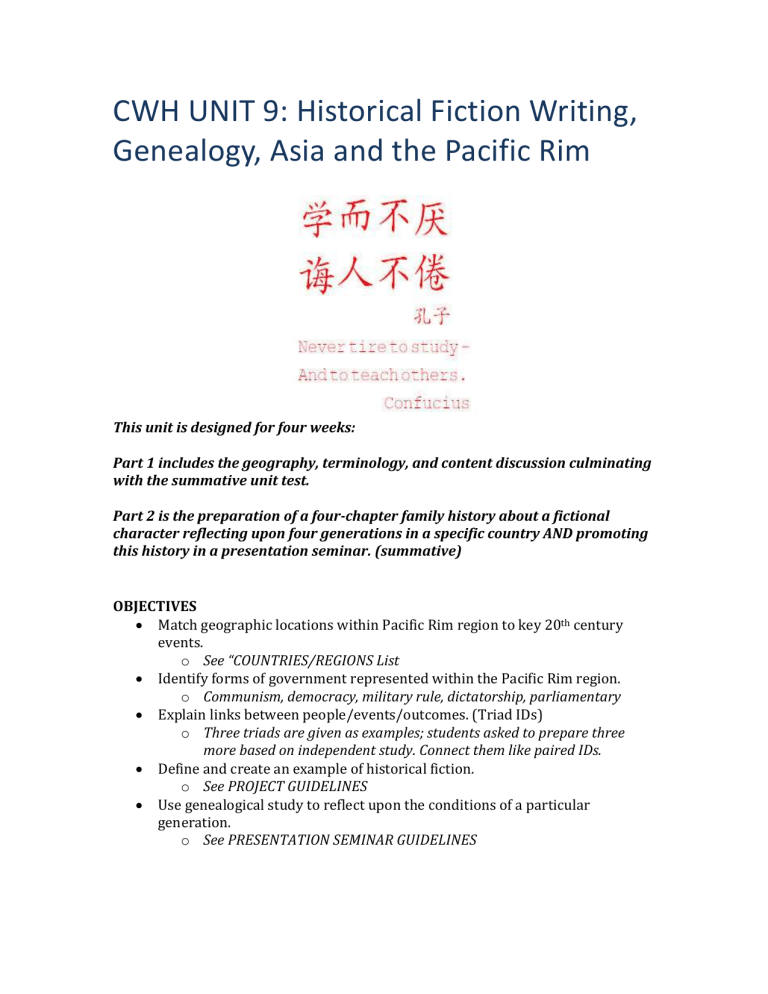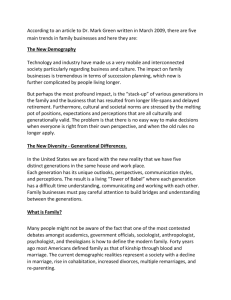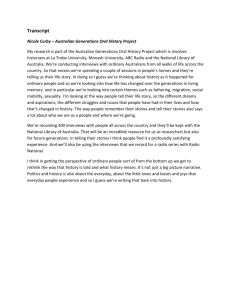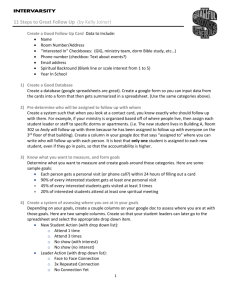File - CWH 2012-2013

CWH UNIT 9: Historical Fiction Writing,
Genealogy, Asia and the Pacific Rim
This unit is designed for four weeks:
Part 1 includes the geography, terminology, and content discussion culminating with the summative unit test.
Part 2 is the preparation of a four-chapter family history about a fictional character reflecting upon four generations in a specific country AND promoting this history in a presentation seminar. (summative)
OBJECTIVES
Match geographic locations within Pacific Rim region to key 20 th century events. o See “COUNTRIES/REGIONS List
Identify forms of government represented within the Pacific Rim region. o Communism, democracy, military rule, dictatorship, parliamentary
Explain links between people/events/outcomes. (Triad IDs) o Three triads are given as examples; students asked to prepare three more based on independent study. Connect them like paired IDs.
Define and create an example of historical fiction. o See PROJECT GUIDELINES
Use genealogical study to reflect upon the conditions of a particular generation. o See PRESENTATION SEMINAR GUIDELINES
COUNTRIES/REGIONS
China
Japan
Indonesia
Malaysia
Singapore
India
Pakistan
Sri Lanka
Philippines
North and South Korea
Australia
New Zealand
Hong Kong
Taiwan
Vietnam
Cambodia
Laos
Thailand
Myanmar (Burma)
Provide outline maps. Students are required to match geographic locations of countries and events.
Examples:
A.
Where is Indochina?
B.
In which country did the
Tiananmen Square Massacre take place?
KEY TERMINOLOGY
V-J Day/Occupation/Supreme Command of the Allied Powers
Emperor Hirohito
Zaibatsu
General Douglas MacArthur
Trade imbalance
Miniaturization
Mao Zedong
Great Leap Forward
Cultural Revolution
Red Guards
Four Modernizations/Deng Xiaopeng/Tiananmen Square Massacre
Tibetan Rebellion of 1959
Hong Kong as “one country, two systems” plan
Korean War
International Monetary Fund
Indochina/Vietnam War/domino theory
Khmer Rouge/Pol Pot/refugees
Boat people
Aung San Suu Kyi
Indian subcontinent/Pakistan/Nehru Dynasty
Kashmir
Archipelago
Dominion status
ANZUS Treaty
Maori
FORMATIVE ASSESSMENTS
Teacher observation
Online geography practice
Guided note-taking in preparation for family history project
Practice test or open note quiz (teacher choice prior to test)
Peer review prior to presentation seminar
SUMMATIVE ASSESSMENTS
Map Test 25 points
Multiple Choice / Short Answer Test 100 points
Family History (Historical Fiction across four generations) 100 points
Presentation Seminar 25 points
INDEPENDENT PROJECT Guidelines & Rubrics
Objective: Produce an example of historical fiction in the format of a family
genealogy. Project should cover 100 years and four generations.
The suggested timeframe is 1925-2025 with each generation
spanning 25 years (Narrator/writer is first generation preceded
by parents, grandparents, and great-grandparents. In each
generation the following components must be revealed:
1.
Two or more significant world events and the impact on people. A futuristic component is required for the years
2013-2025 (make educated predictions; reveal goals, etc.)
2.
Significant events or residents of the local area chosen by the student as the residence of the family (it is fine for the family to move within the region).
3.
Offer evidence of social, political, religious, industrial, struggles, successes, hopes, fears, etc.)
4.
Submit MLA7 sources used in the researched portion. technological, and economic status as it has been recorded over time. (jobs, affiliations, standard of living,
Format options:
1.
Chapter Book—4 chapters in story format
2.
Scrapbook—4 sections of images with detailed narrative captions—sizable collection in organized format
3.
Podcast—4 chapters written and recorded
4.
Vodcast—powerpoint accompanied by detailed narration
Project Rubric:
“A” Projects 90-100 points
1.
More than two significant world events and the impact on people for each generation. Future/forecast is included.
2.
Several significant events or residents of the local area are discussed in an interesting and educational format.
3.
Evidence of social, political, religious, industrial, technological, and economic status as it has been recorded over time. Material is integrated so that the work is interesting and easy to follow.
4.
MLA7 referenced sources used in the researched portion are scholarly and correctly formatted.
5.
On time project is creative, thoughtful, and polished.
“B” Projects 80-89 points
1.
Two significant world events and the impact on people for each generation. Future/forecast is included.
2.
Few significant events or residents of the local area are discussed in an interesting and educational format.
3.
Evidence of social, political, religious, industrial, technological, and economic status as it has been recorded over time. Material may not be well integrated to provide clarity and add interest.
4.
MLA7 referenced sources used in the researched portion are scholarly and correctly formatted.
5.
On time project is creative and thoughtful.
“C” Projects 70-79 points
1.
Fewer than two significant world events with the impact on people for one or more of the generations. Future/forecast may be included.
2.
Few significant events or residents of the local area are discussed in an interesting and educational format.
3.
Incomplete evidence of social, political, religious, industrial, technological, and economic status as it has been recorded over time. Material may not be integrated to provide clarity and add interest.
4.
MLA7 referenced sources used in the researched portion are scholarly and correctly formatted.
5.
On time project is creative and/or thoughtful.
“D” Projects 65-69 points
1.
Missing adequate number of world events and the impact on people.
2.
Few, if any, significant events or residents of the local area are discussed in an interesting and educational format.
3.
Incomplete evidence of social, political, religious, industrial, technological, and economic status as it has been recorded over time. Material is listed without connection.
4.
MLA7 referenced sources used in the researched portion may be scholarly and/or correctly formatted.
5.
On time project is creative and/or thoughtful.
“F” Projects 60-64 points
Many of the “D” characteristics are represented and project appears hurriedly assembled, unedited, or incomplete at due date.
PRESENTATION SEMINAR Guidelines & Rubrics
After projects have been submitted for grading, each student is responsible for a 5-10 minute presentation about their assigned country over the past
100 years. Students will post their presentation notes to a class Google Doc so all will have access to facts, figures, and analyses.
Rubric:
“A” Presentations 23-25 points
Student discusses rather than reads from notes page; responds well to class questions; shows evidence of preparation by following an organized and logical delivery of information; presents clearly (audible, makes good eye contact, appropriate pacing, engages the audience); presents at least two significant events for each of the four generations; limits presentation to 5-10 minutes; posts notes to
Google Doc before class.
“B” Presentations 20-22 points
Student discusses rather than reads from notes page; responds with accuracy to some questions; shows evidence of preparation by following an organized and logical delivery of information; presents adequately in most regards (usually audible, may need to make more eye contact; may speak too fast or too slowly); presents at least two significant events for each of the four generations; limits presentation to 5-10 minutes; posts notes to Google Doc before class.
“C” Presentations 18-19 points
Student reads from notes page; responds with accuracy to some questions; shows evidence of preparation by following an organized and logical delivery of information; presents adequately in a few regards (should speak louder, maintain better eye contact, adjust pacing); presents one significant event for each of the four generations; presentation is slightly under 5 minutes or slightly over
10 minutes; posts notes to Google Doc before class.
“D” Presentations 17 points
Student reads from notes page; unable to answer most questions; no evidence of preparation due to confusing delivery of information; presentation skills are unrehearsed; information missing from one or more of the generations; student may or may not have adhered to the time frame; posts notes to Google Doc before class.
“F” Presentations 15-16 points
Many of the “D” characteristics are represented and notes are not posted to Google Doc before class.
SUGGESTED RESOURCES FOR STUDENTS & TEACHERS
All About Asia—online games/geography practice http://www.sheppardsoftware.com/Asian_Geography.htm
Asia Pacific Ed Crossings, Topics and Issues http://www.asiapacificedcrossings.org/topics_issues/
BBC News Asia http://www.bbc.co.uk/news/world/asia/
East Asia in Geographic Perspectives http://afe.easia.columbia.edu/geography/
The Hidden Story of Partition and its Legacies http://www.bbc.co.uk/history/british/modern/partition1947_01.shtml
History of Mitsubishi Electric Corporation http://www.mitsubishielectric.com/company/about/history/overview/inde x.html
Interview at Tiananmen Square with Chai Ling http://afe.easia.columbia.edu/special/china_1950_chailing.htm
Modern History Sourcebook; Asia Since 1900 http://www.fordham.edu/Halsall/mod/modsbook52.asp
National Library of Australia website http://www.nla.gov.au/australiana/australian-history-selected-websites
Teara: The Encyclopedia of New Zealand http://www.teara.govt.nz/en/history/page-6
Timelines, Asia for Educators http://afe.easia.columbia.edu/main_pop/related/timelines.htm
Toyota: 50 Years in the U.S. http://www.toyota.com/about/our_business/our_history/timeline.html
Wall Street Journal, Asia Edition http://asia.wsj.com/home-page







